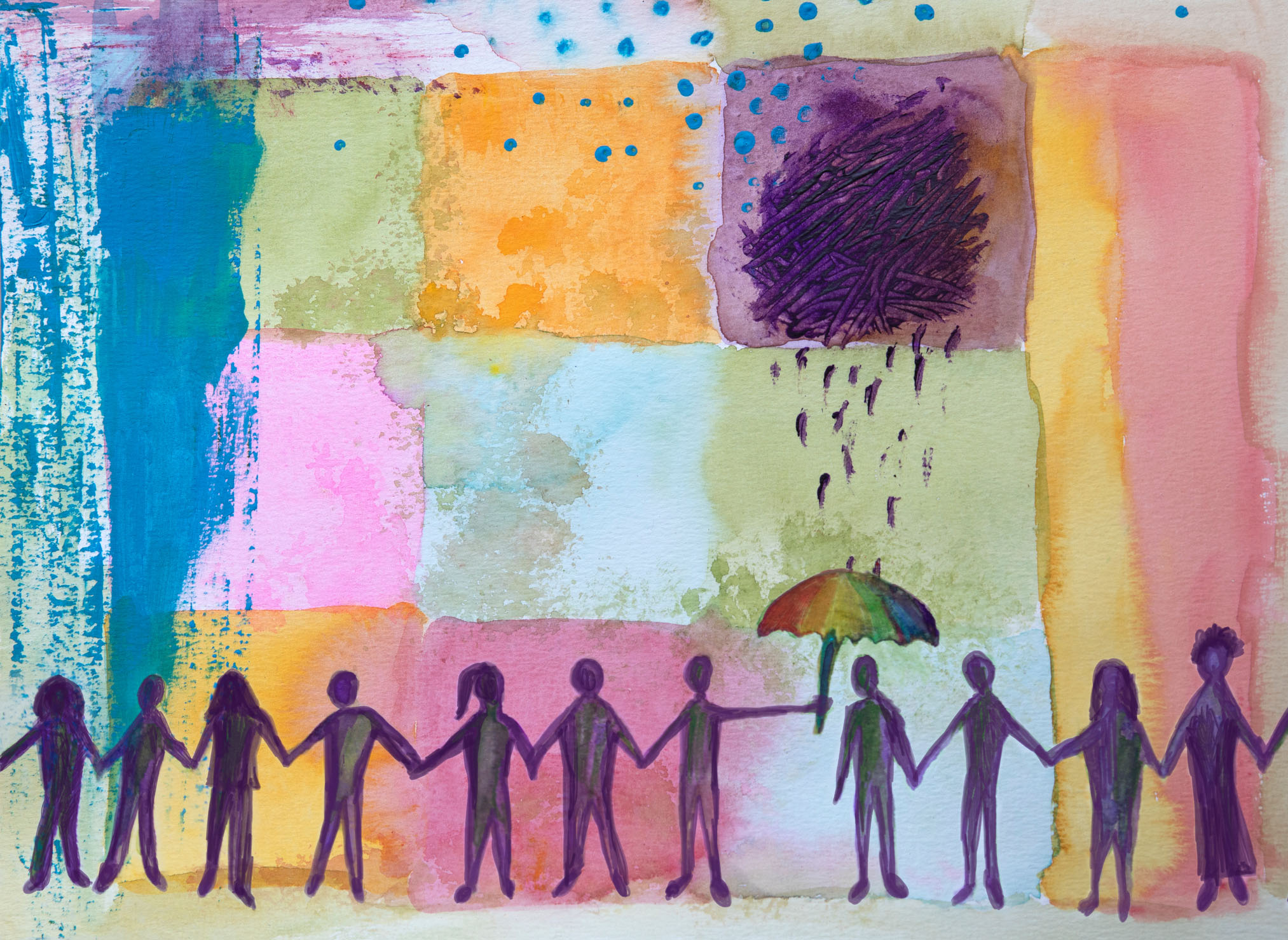Mourning is unfashionable. A popular platitude is that funerals are meant to be a “celebration of life.” This seemingly innocuous phrase is actually a subtle form of peer pressure, demanding the heartbroken mourners remain upbeat so they don’t drag the mood down for the rest. The bereaved are counseled to look for “closure” and find a way to continue with their lives. Closure’s popularity has a lot to do with our therapeutic culture, which puts comfort before meaning. Even authentic pain is seen with suspicion, and all too often treated like a disease.
Philippe Aries, in his book The Hour of Our Death, was among the first to critique what he calls the “denial of death” in the Western world. End-of-life patients are hospitalized until their dying breath, and afterwards, the deceased is disposed of quietly, with a minimum of social disruption. Funeral homes are meant to stifle one’s emotions. Quiet conversations in cavernous chapels lower the emotional temperature. Eulogies are swaddled in sonorous words, while the ubiquitous polished wood paneling muffles the soul’s inner cry. And the mourners return to work the next day, ready to “move on.”
This is a picture of mourning done wrong, an unwillingness to encumber one’s heart with the ugly and unruly emotions of loss and bereavement.
Judaism emphasizes the importance of mourning; it affirms an ethics of memory, which obligates us to continue to honor our deceased family and friends. It is unthinkable for someone to pass away and for everyone else to just “move on” afterwards. Love demands that we mourn.
Beyond the moral imperative, Judaism recognizes that mourning is transformative. Grieving is the first step towards resilience.
This might seem counterintuitive. Grief can break and weaken one’s personality. The Talmud says that a sigh can “break half of one’s body”; in other words, to stew in one’s suffering only makes the suffering worse. An excess of mourning can lead to hopelessness and depression.
But the vice of one extreme doesn’t always make a virtue of its opposite. There is a middle path between mourning endlessly and just “moving on”; and on that middle path, one encounters the road to resilience.
Tisha B’Av is about this resilient grief. On this day, generations of Jews have mourned the destruction of the Temple. At first glance, this is strange; why mourn events that took place two millennia ago? And how does one even mourn for the loss of something they have never known or experienced?
Yet Jews did not find it strange to mourn on Tisha B’Av; they had much to cry about anyway. When they sat on the floor and wailed, they added to the service elegies about contemporary calamities: the Crusades, the burning of the Talmud, the expulsion from Spain, the Chmielnicki Massacres, and the Holocaust.
However, this was not an expression of hopelessness; as they sat on the floor of their synagogues, mourning the catastrophes of the past and present, Jews were quite certain about their future.
An oft-quoted apocryphal story expresses this well:
Napoleon was riding past a Paris synagogue on Tisha B’Av, and noticed how the Jews were sitting on the floor and weeping. He sent in his assistant to inquire as to what the Jews were crying about. His smirking assistant returned and informed Napoleon in a condescending voice that the Jews were mourning the destruction of the Temple that had occurred centuries earlier. Napoleon thought for a moment and remarked: “A people that has mourned the loss of their Temple for so long will survive to see it rebuilt.”
Like most legends, this tale is like a mirror, reflecting what the people telling it believed about themselves. Jews did not see Tisha B’Av as a day of self-pity and hopelessness. Instead, they remembered the Talmudic adage that “whoever mourns for Jerusalem will merit to see her joy.”
They saw within the grief of Tisha B’Av the possibility of redemption.
Mourning highlights death and reminds us that vulnerability defines the human condition. This realization should diminish us and make us feel unworthy of greatness. We know how a tiny microbe can defeat the greatest warrior; the most accomplished of humans can stumble and fall, and suddenly disappear. We are, to quote the haunting words of the High Holiday liturgy, “like a potsherd that is breakable, like grass that withers, like the flower that fades, like the shadow that passes, like the cloud that vanishes, like the wind that blows, like the dust that flies, and like a fleeting dream.”
Humanity is temporary.
But this very vulnerability can inspire us to reach for eternity. Rabbi Joseph B. Solovetichik explains that Jewish mourning rituals express that “one must never acquiesce in evil, make peace with it, or condone its existence.” After a beloved family member dies, we don’t simply go home and say that death was God’s will. We mourn and grieve for the departed; we rend our garments, sit on the floor, and refuse all pleasure.
These mourning rituals are a protest against death. Confronted by the profound injustice of tragedy, we “rage, rage against the dying of the light.” Our pain prods us to take up the battle to make the world a better place. Even in the shadow of death we continue to reach for eternity, to build a future where tragedy is no longer possible.
And that is the goal of Tisha B’Av; it points the way to redemption. The Midrash comments that the Messiah was born on Tisha B’Av, and his name is Menachem (“comforter”). There was a custom on the afternoon of Tisha B’Av for women to clean their homes and make up the rooms, to prepare for the Messiah.
We know that our tears are not in vain; they are the very foundation of a better future.
Grief can break one’s spirit, but it also can strengthen it. Richard G. Tedeschi and Lawrence G. Calhoun have studied the possibility of post-traumatic growth. The idea is an old one: that “what does not kill me will only make me stronger.”
Post-traumatic growth is the story of Tisha B’Av. Mourning can empower and transform, and carry within it the very seeds of redemption. And that is precisely what has happened. Tisha B’Av is a testament to the Jewish spirit, which stayed resilient even in the worst of times.
May God bring our Menachem this year, to heal the brokenhearted and bind their wounds. Amen.
Rabbi Chaim Steinmetz is the Senior Rabbi of Congregation Kehilath Jeshurun in New York.




